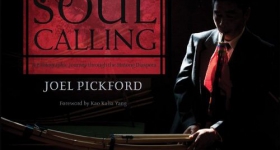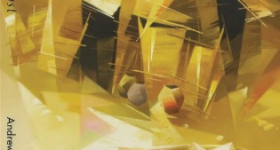I’ve never been a big reader of genre novels, not to mention the
trendy supernatural kind with its shirtless vampires and girl power witches.
Though I know it’s unfair, I’ll admit that I judge books by their covers, and
genre novels tend to have the cheesiest ones of all. You know the covers I
mean: the ones marked by metallic, embossed titles and melodramatic images,
like red flowers, red apples, or a red pool of blood spreading concentrically
in the moonlight.
My reluctance to read these books doesn’t come from any
deep-seated repulsion or animosity (I have absolutely no strong feelings about Twilight or its readers). Rather, it’s
as if I’ve been conditioned to expect the best stories only behind tasteful
Penguin and Vintage covers, in books bound so that they flop open in my hands
with sweet, matte familiarity. I’ve become a book snob not based on content but
based on the sensory experience that comes before it. When I walk into a
bookstore, before I even realize what’s happening, my brain tenses and draws
back from the garish, sexy genre books like a large, prudish snail.
So when Witches of East End
arrived in my mailbox, my snail brain panicked. Here was one of those covers --
an extreme close-up of half of a girl’s face, partially obscured by striking
red leaves, with fire reflecting ominously in her iris -- and it had
infiltrated my apartment to lay siege to my snobbish sensibilities.
Then something strange happened. As quickly as it came, the panic
receded and left behind only curious excitement. All of a sudden I had not just
permission, but an obligation to read one of these forbidden books that I’d
always rejected without reasonable cause.
As it turned out, I loved it.
Let there be no doubt: Witches
of East End is cheesy. Seriously cheesy. It follows a family of witches (a
mother and her two adult daughters) living incognito in a picturesque New
England town too small to make it onto any map. Freya, the wild younger sister,
works as a bartender while Ingrid, the uptight older sister, steams blueprints
at the local library, refusing to let her hair down or show off her cleavage.
We’ve met these characters already, in other novels and on TV, and the same
goes for their supporting cast -- the gay best friend, the perfectly wholesome
fiancé, and of course the magnetic bad boy.

Photo of the author by Denise Bovee
So what’s to love among all these cliches?
Maybe it’s time for another confession. Though I haven’t explored
many fantasy worlds beyond Narnia and Hogwarts, I’ve toed the line of a
possibly even more maligned brand of fiction. The Sisterhood of the Traveling Pants and The Princess Diaries paved the way during my teen years. Before
long, I’d also tried Bridget Jones’s
Diary and Sex and the City; when
I hit Bergdorf Blondes and The Friday Night Knitting Club, I knew
I’d gone too far. But by then, I’d already fallen in love with a sizable stack
of books that could be described (accurately or not) as “chick lit.”
All of this is to say that I understand the stylistic conventions
typical of a book like Witches of East
End, a book, like its “chick lit” sisters, meant as feel-good, page-turning
entertainment. Their casual, conversational narration tends to be peppered with
fragments, ellipses, italics for emphasis, and “yes”es and “oh”s at the
beginnings of sentences, as if the narrator means to answer our unasked
questions. This excerpt from Witches
gives examples of all the above: “Yes, they had made love the night of her
engagement party... no, they had fucked.
[...] But that was enough. After that she had regained her senses.”
Sometimes the combination of all these elements leads to a book
that feels unreadable, particularly for those of us with preconceived ideas
about how prose should behave. That is, elegantly, deftly, like the sleek
swimming pattern of a dolphin, not the perky bobbing of a sorority girl’s
ponytail.
But, as with all others, this style of writing can be done poorly
and it can be done well. Melissa de la Cruz writes well. Her prose, though much
closer on the spectrum to perky than elegant, translates effortlessly into
imagery; the words disappear immediately. What’s left is an addictive,
well-paced story about three immortal women whose histories, magical powers,
and limitations the reader learns about only in small, scattered pieces. Much
of the joy of de la Cruz’s novel comes from trying to understand the world that
she’s built. What were Freya, Ingrid, and Joanna like in their previous
incarnations? Where are the men of their
family? What is this supposed spell that keeps neighbors from noticing
their immortality? And if they’re immortal, what makes them feel fear?
When Joanna, Ingrid, and Freya turn out to be not just witches
but Norse goddesses (not a spoiler), the novel’s candy coating gives way to an
unexpected bit of nutrition. Though de la Cruz focuses mostly on the
characters’ relationships, some of the ancient lore of Asgard, Midgard, and Hel
weaves its way in as well, introducing a new world to an audience that might
never have discovered it otherwise.
To be honest, though, I would have enjoyed Witches even without the educational redemption. Beneath the cheesy
cover and my layers of prejudice, this novel is pure fun. I would call it a
guilty pleasure book, but I don’t feel guilty at all.
Mia Monnier is a graduate of Middlebury College who lives and writes in Los Angeles.









Comments